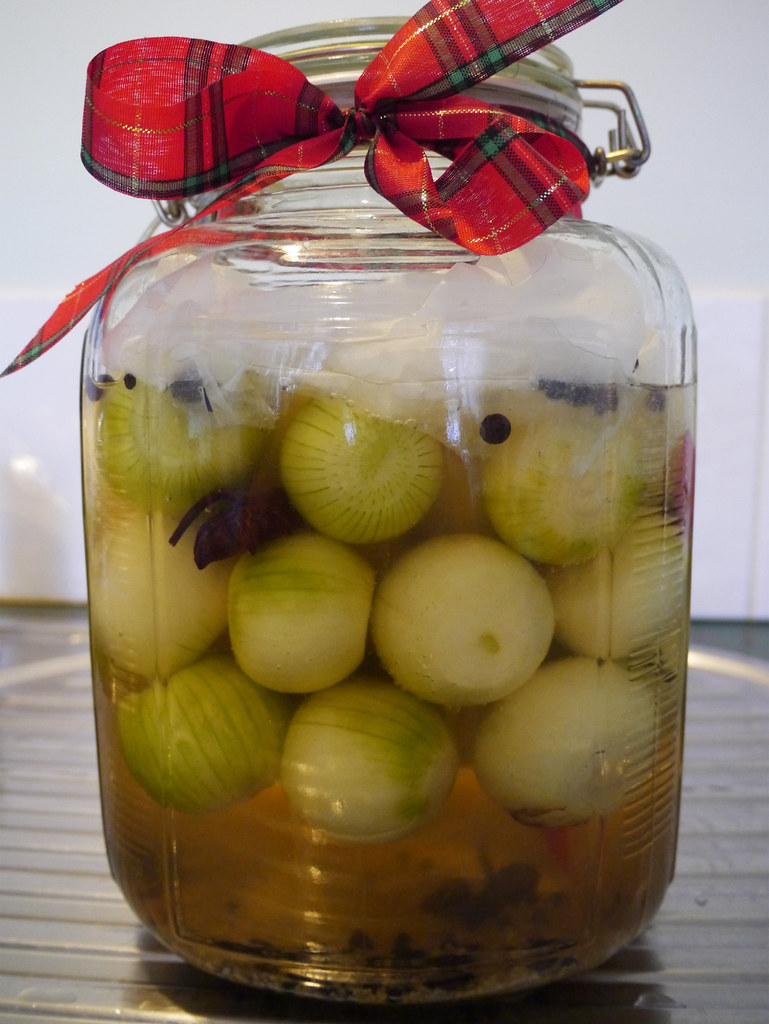
A simple probiotic pickled onion recipe that is good for your inner health!
“What‽ Another pickled onion recipe? I thought you wanted to keep things simple!”
[dropcap]Ha![/dropcap] Fair enough. I must admit that we’re getting a little pickled onion cray here at Padaek. Just a fortnight ago, I shared with you the KISS pickled onion recipe and before that I shared Grandma’s pickled onion recipe. But you know what? Pickled onions really are that delicious and we enjoy munching and savouring their intense, sharp, juicy flavours so much that I just had to share with you another (hopefully final) pickled onion recipe that is also super simple – but this time, it does not use vinegar.
Instead, it uses brine (salt and water solution) (plus sugar), and optional aromatics in an ancient pickling method called lacto-fermentation.
What is lacto-fermentation?
Before modern pickled onions (pickled in vinegar), onions were onced pickled using lacto-fermentation, which is a simple process that uses nothing more than salt and water. This is the same method that is used to make pickled classics such as gherkins, kimchi and sauerkraut.
The process works because of the wonderful fact that bacteria that could be harmful to us can’t tolerate much salt, but there are healthy bacteria that can. These salt tolerant ‘good’ bacteria are called ‘Lactobacillus’ – hence, ‘lacto’ in lacto-fermentation.
Lacto-fermentation works in two stages. In the first stage, while the vegetables are in the salty solution, the harmful bacteria are killed off while the good Lactobacillus survive. Hooray! In the second stage, the Lactobacillus organisms convert lactose and other sugars present in the food into lactic acid. This process creates an acidic environment that safely preserves the vegetables and also give lacto-fermented foods their classic tangy flavour. Yum!((1))
The benefits of eating food with Lactobacillus bacteria include a healthier digestive system and speedy recovery from yeast infections. They are also supposed to have anti-inflammatory properties and be useful in preventing certain kinds of cancer. Lacto-fermented foods are considered ‘probiotic foods’ (probiotic means ‘for life’) because they help promote the growth of healthy bacteria in the intestinal tract.((2))
Lacto-fermentation is a common process also used in Lao cuisine. Both ‘som puck gard’ (pickled cabbage) and ‘dorng mark plum’ (pickled sour plums) are examples of lacto-fermented Lao dishes. When we were young, we enjoyed making and eating ‘dorng mark plum’ with a spicy dipping sauce called ‘jeow mark plum’.((3)) I usually let my siblings do the hard work of pickling the plums but I remember the process quite well. Basically, the freshly picked sour plums were washed and then sliced with a knife on the sides (similar to that with Kalamata olives – so that the pickling solution would work its magic faster). Then, they were bottled in a glass jar with a simple water and salt solution, and left in a kitchen cupboard to pickle/ferment for several weeks.((4))
The following probiotic/lacto-fermented pickled onion recipe is an adaptation of/based on The 1910 Bottling Company’s Probiotic Pickled Onions recipe by Steve Hogwood. Thanks very much for sharing your recipe Steve! I’ve modified it slightly by adjusting the quantity/measurements of the ingredients because I used a 1.5 kg bag of picking onions. I also altered the pickling solution (by adding raw sugar) and the spice mix (by adding star anise, allspice and fresh bullet chilies, and omitting coriander seeds).
I can’t wait to see how this recipe turns out. Knowing that eating lacto-fermented foods, including lacto-fermented pickled onions is good for my inner health – if this recipe turns out well, I think I might have to make it on a regular basis and experiment with other vegetables too. Watch out gherkins, capers, cabbage and pigs ears! Stay tuned for burping and tasting updates folks!((5))
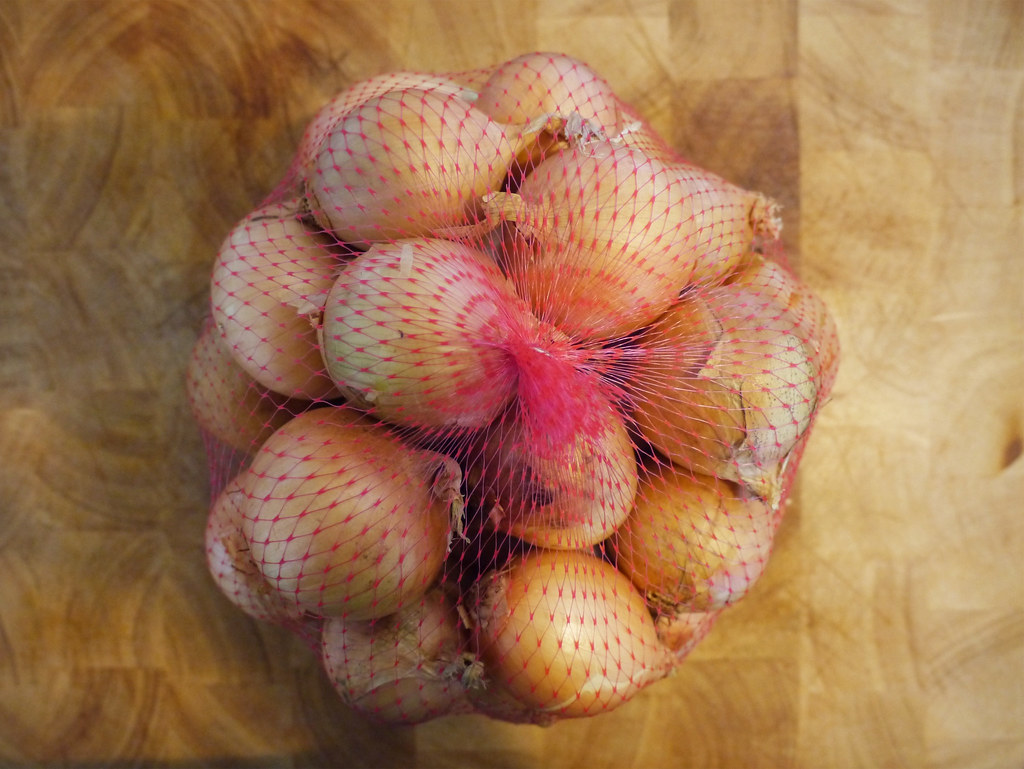
Pickling onions.
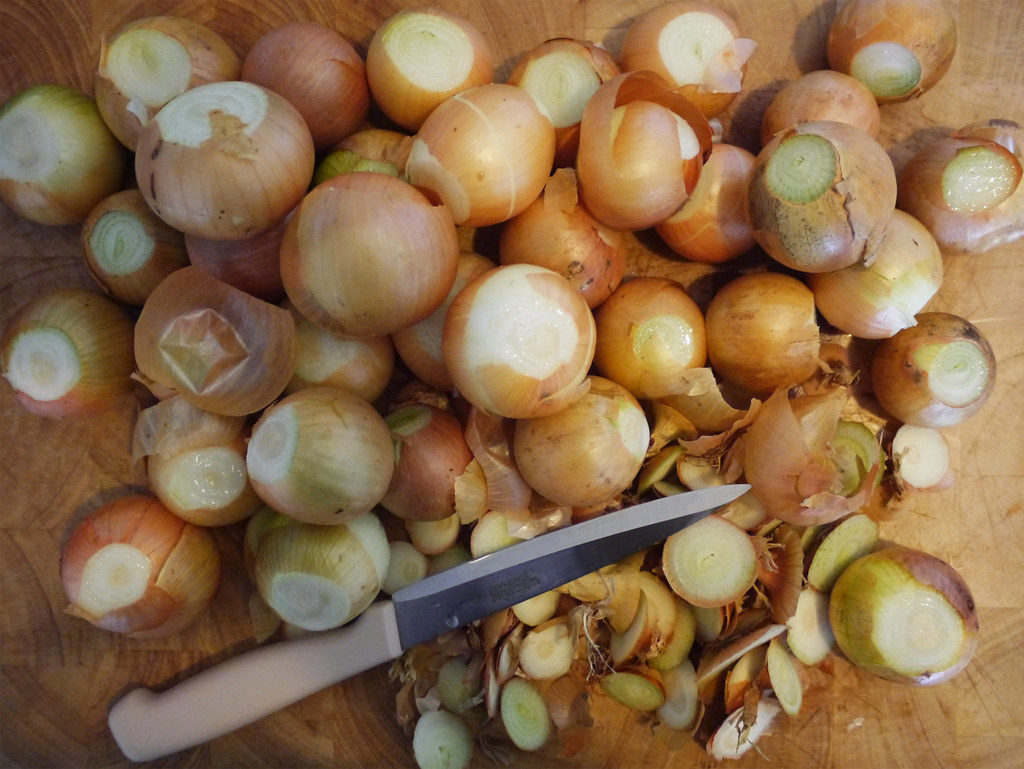
Top and tail the onions and then peel them.
Note: Peeling onions can be a chore but the easiest way I’ve found doing it is this. First, top and tail the onion with a knife. Then, with the onion in one hand and a knife in the other, very carefully cut a vertical line along the side of the onion just deep enough to cut through the first layer of skin. After you’ve done this, with the tip of the knife or with your fingers, remove this first layer of onion skin via the vertically cut line. I hope that helps and be super careful with the knife when doing this. Have fun!smile
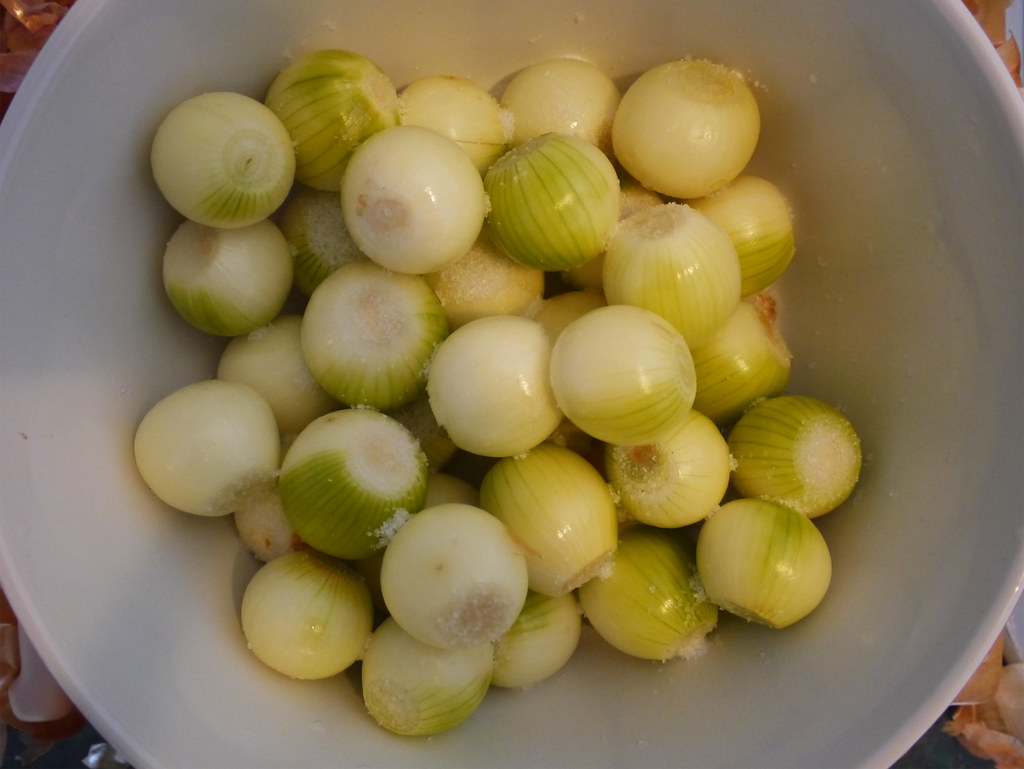
Place the onions in a large mixing bowl and sprinkle 2 Tbsp of sea salt over them. Mix through and let rest in the fridge for 3 hours.
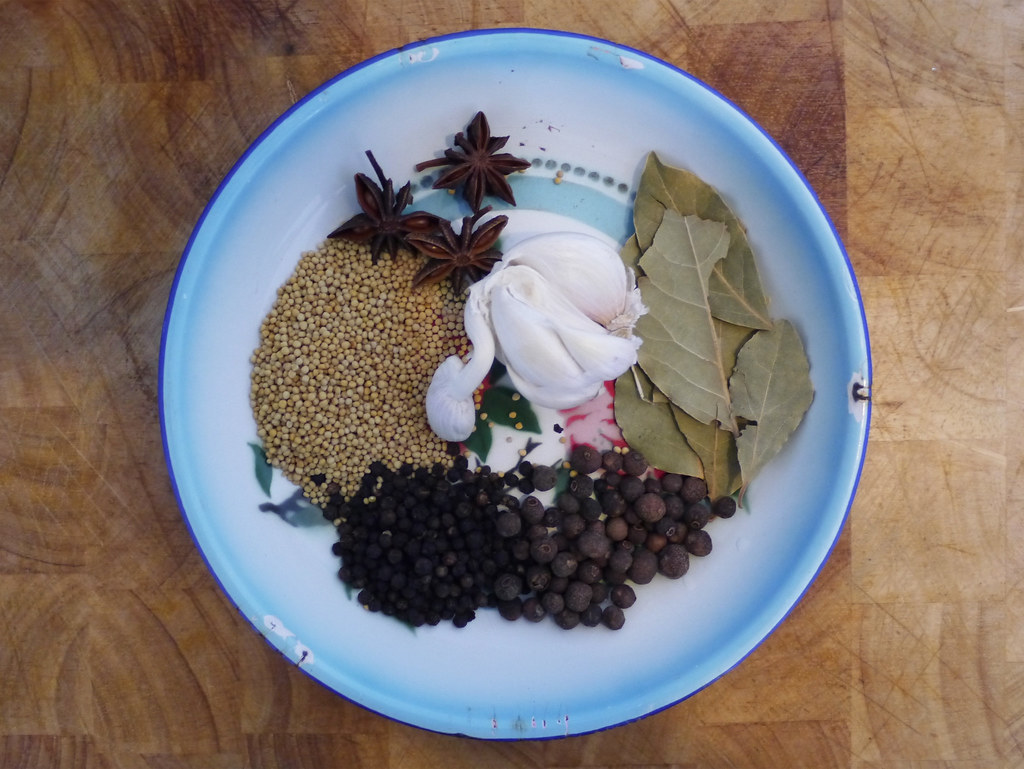
Pickling spices (clockwise from top right): bay leaves, allspice, black peppercorns, yellow mustard seeds, star anise, garlic (center).
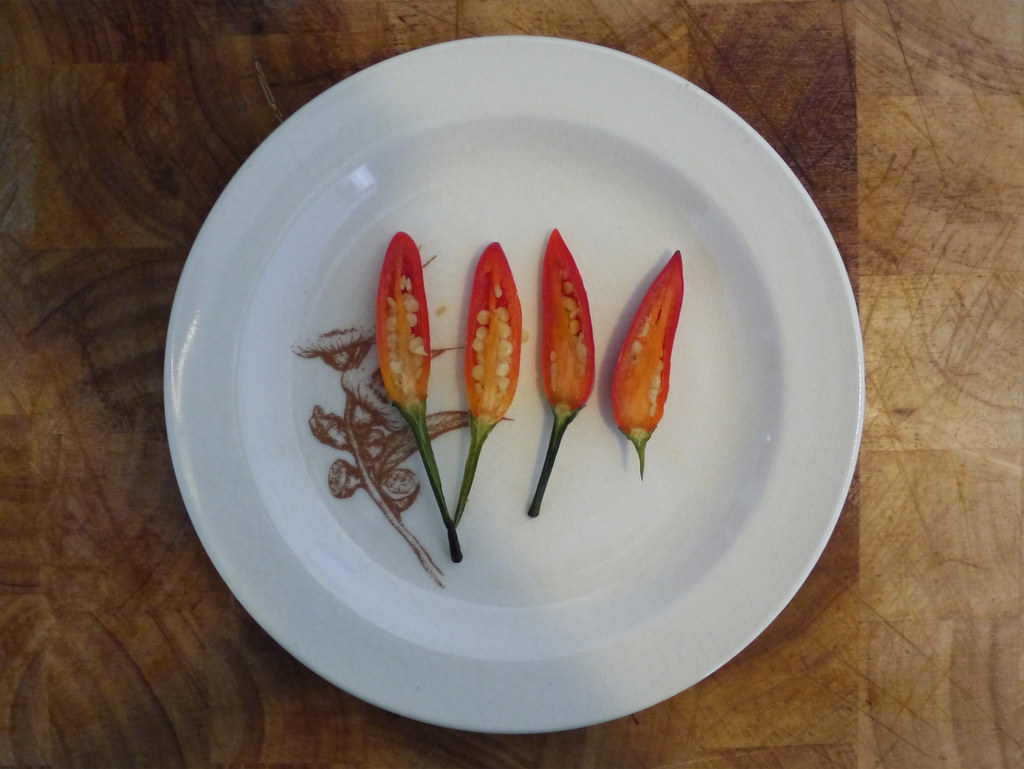
Halved frozen bullet chilies.

Raw sugar and sea salt.
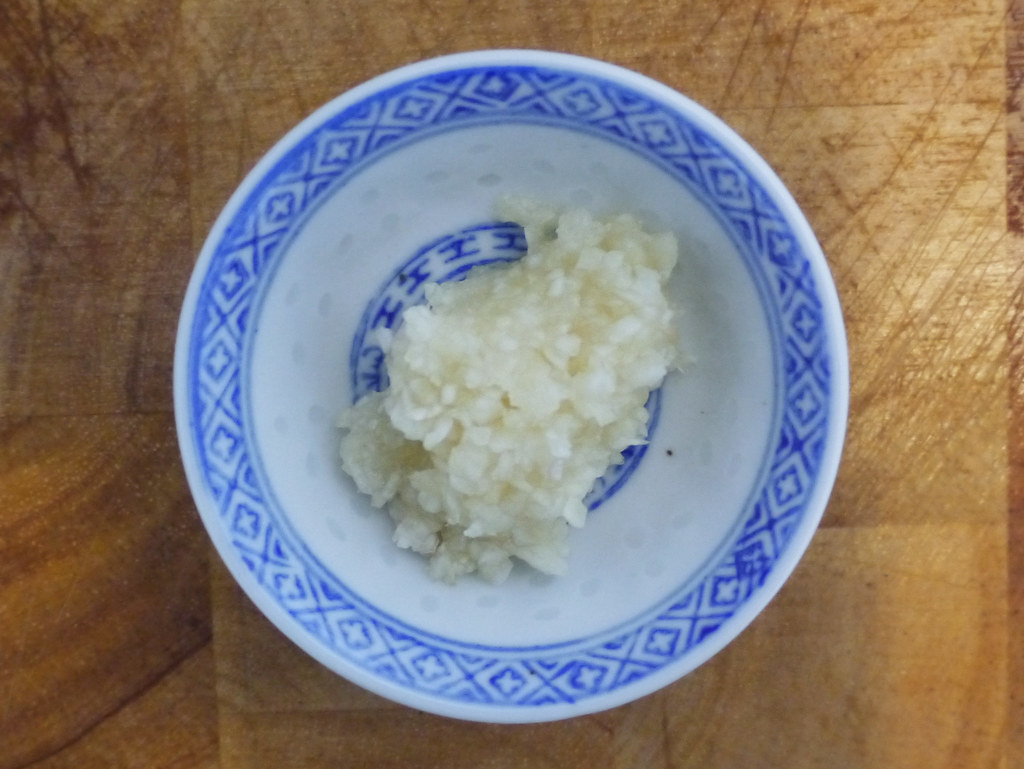
Extreme closeup of minced garlic (2 cloves).
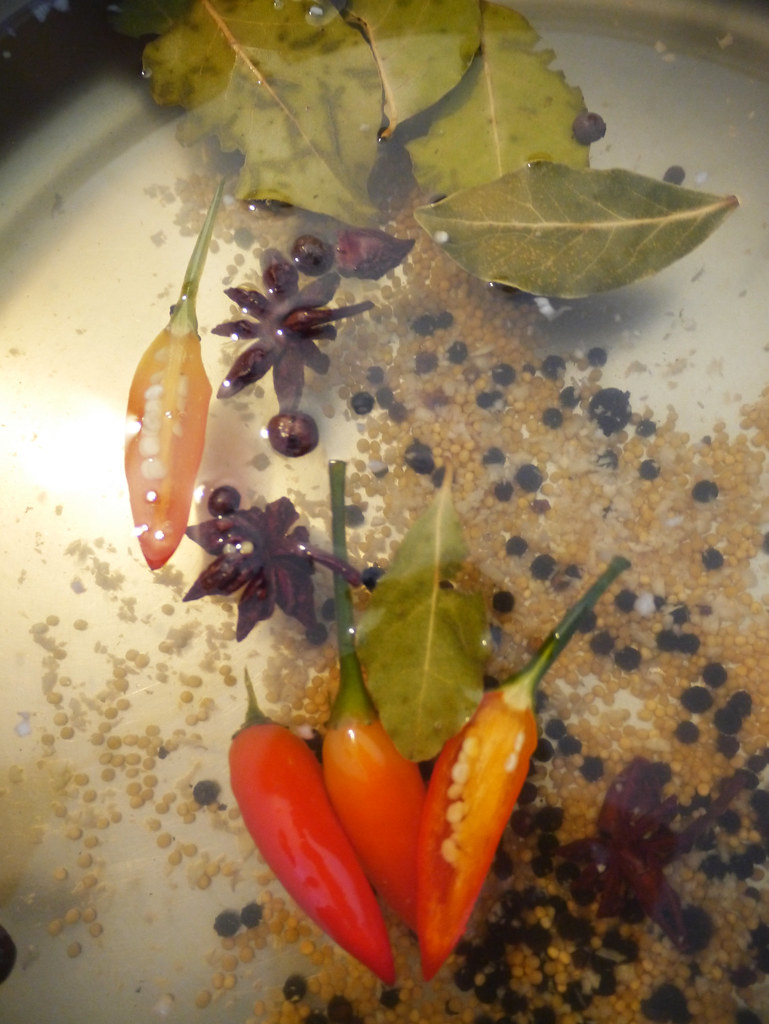
In a saucepan, add 2 Litres of water, 5.5 Tbsp of salt, raw sugar, star anise, bay leaves, allspice, black peppercorn, yellow mustard seeds, halved chilies and minced garlic. Bring the heat to medium and let the mixture simmer for a couple of minutes. Stir gently. When the salt and sugar are dissolved, turn off the heat and let the mixture cool down.

Swimming halved bullet chilies.
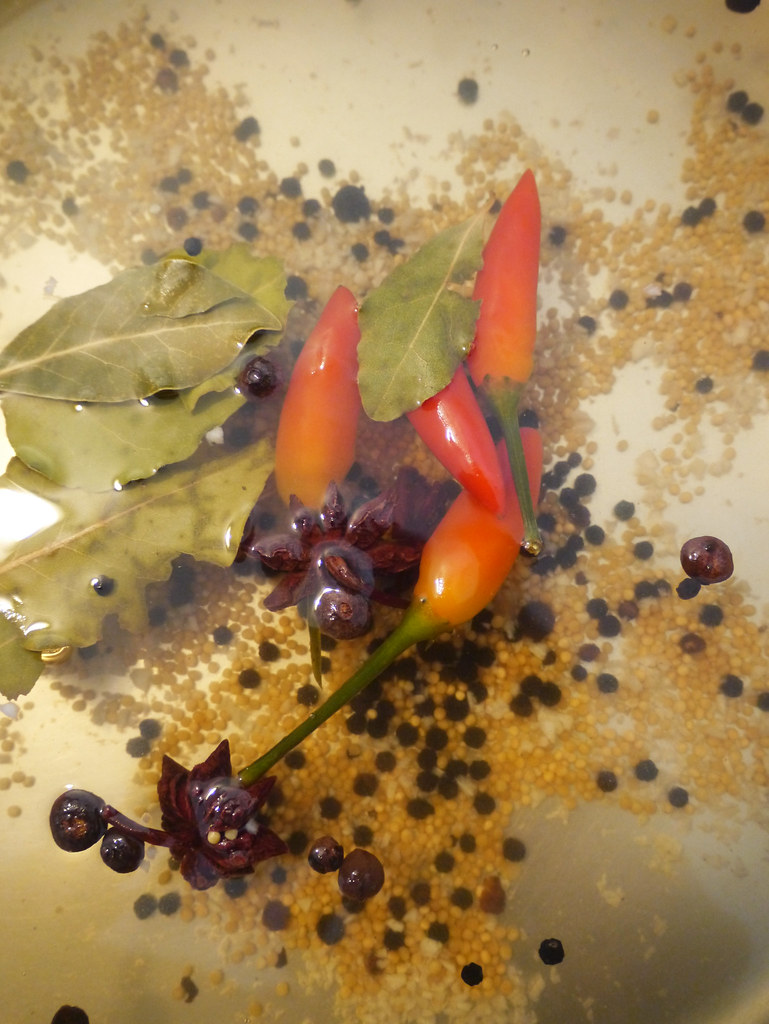
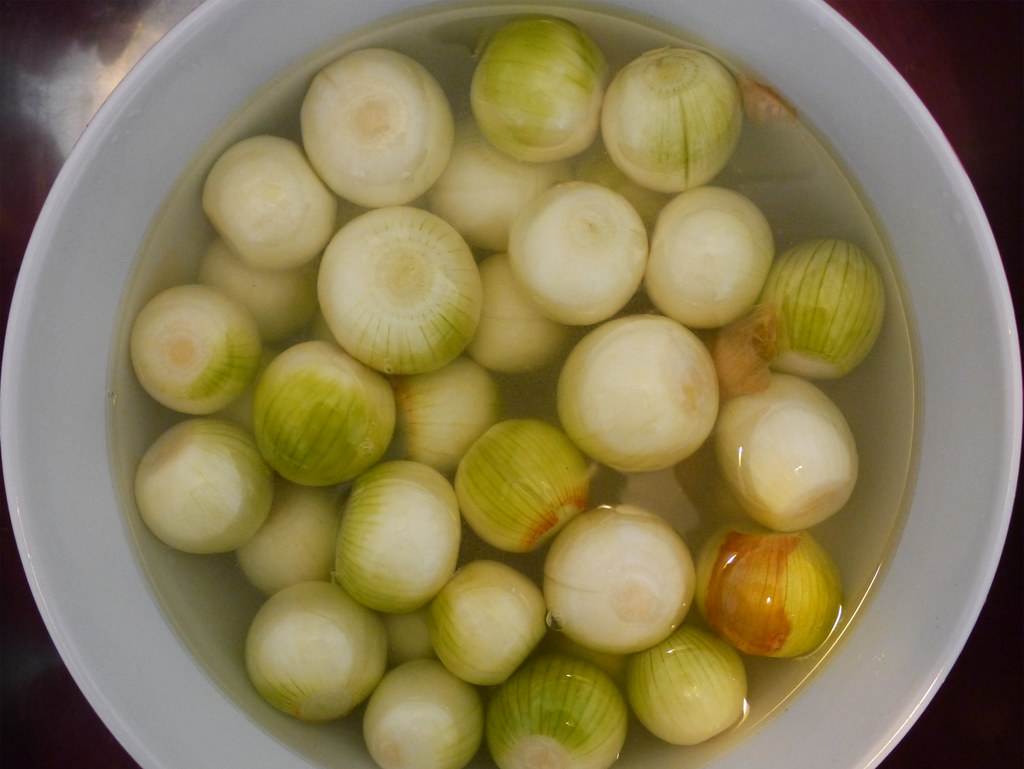
After three hours, wash the onions in cold water, drain and let dry.
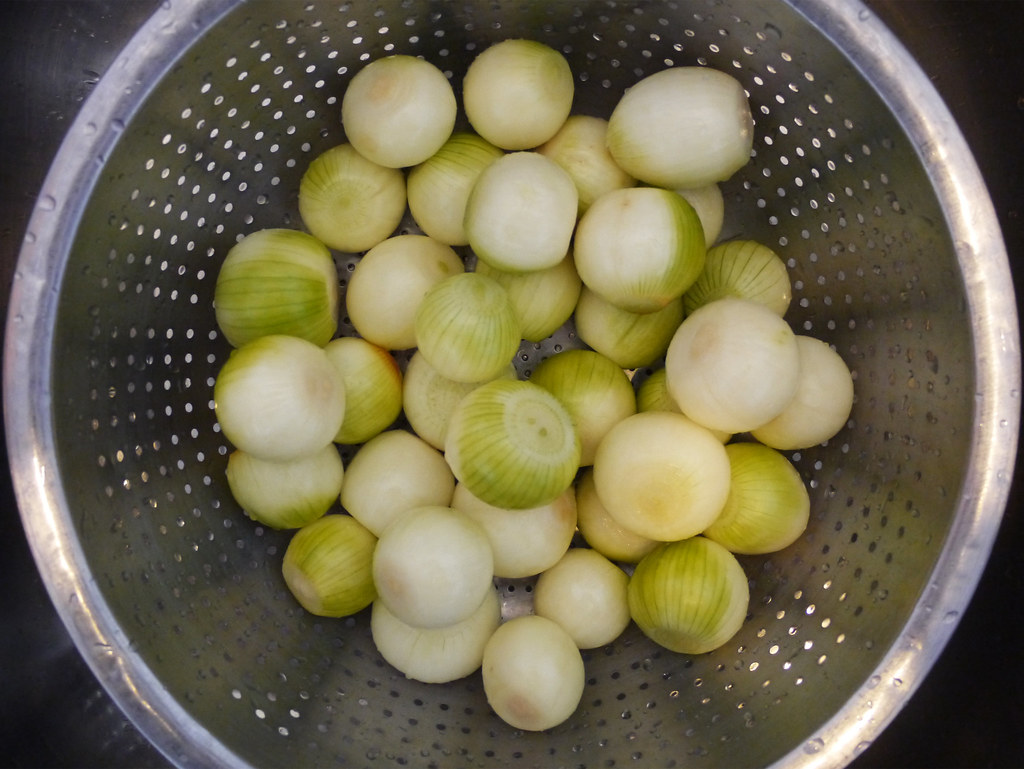
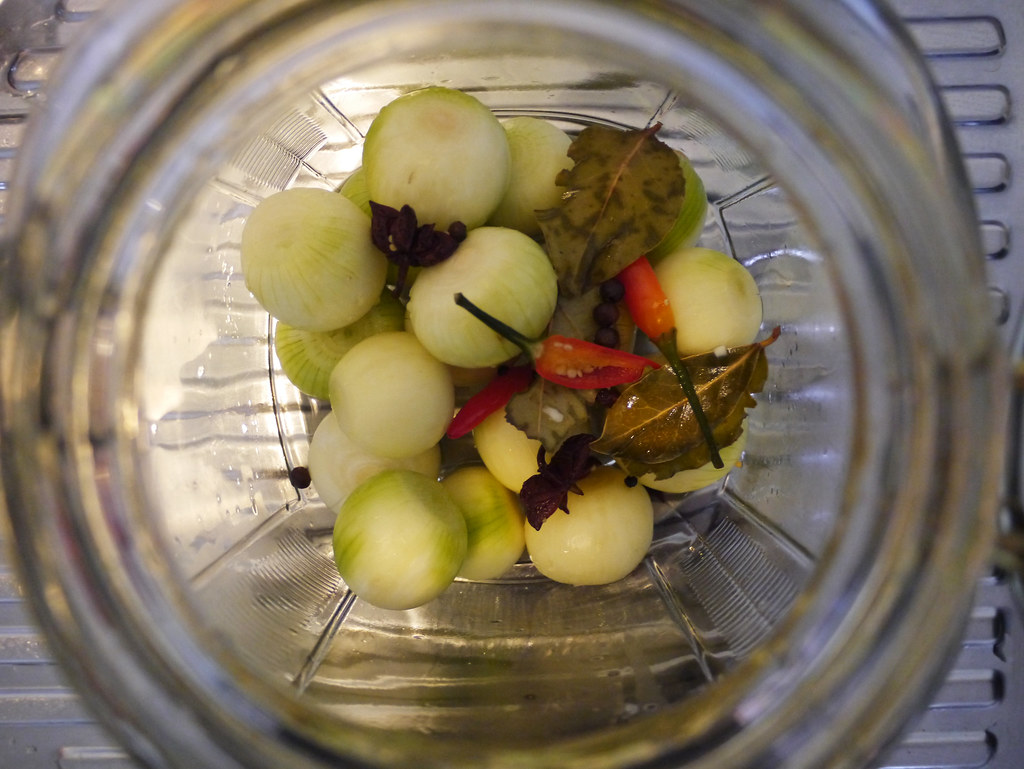
In a sterilized glass jar, place half of the onions and half of the pickling spices from the mixture.

Add the remaining onions.
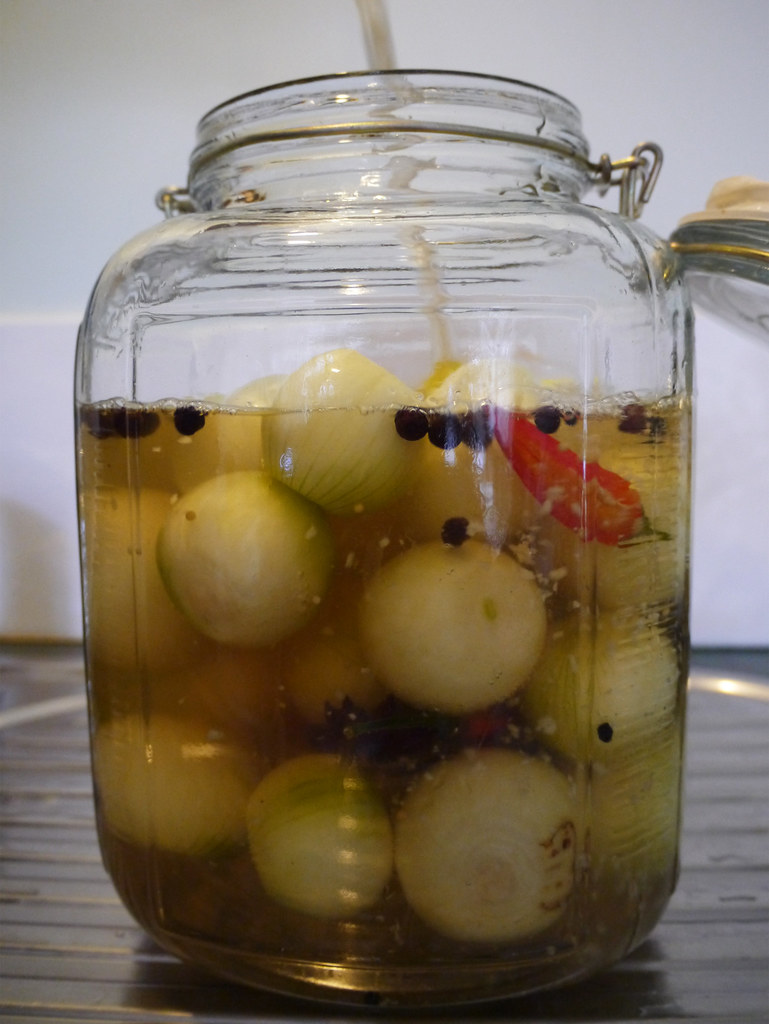
Carefully pour in the pickling solution and pickling spices from the saucepan.
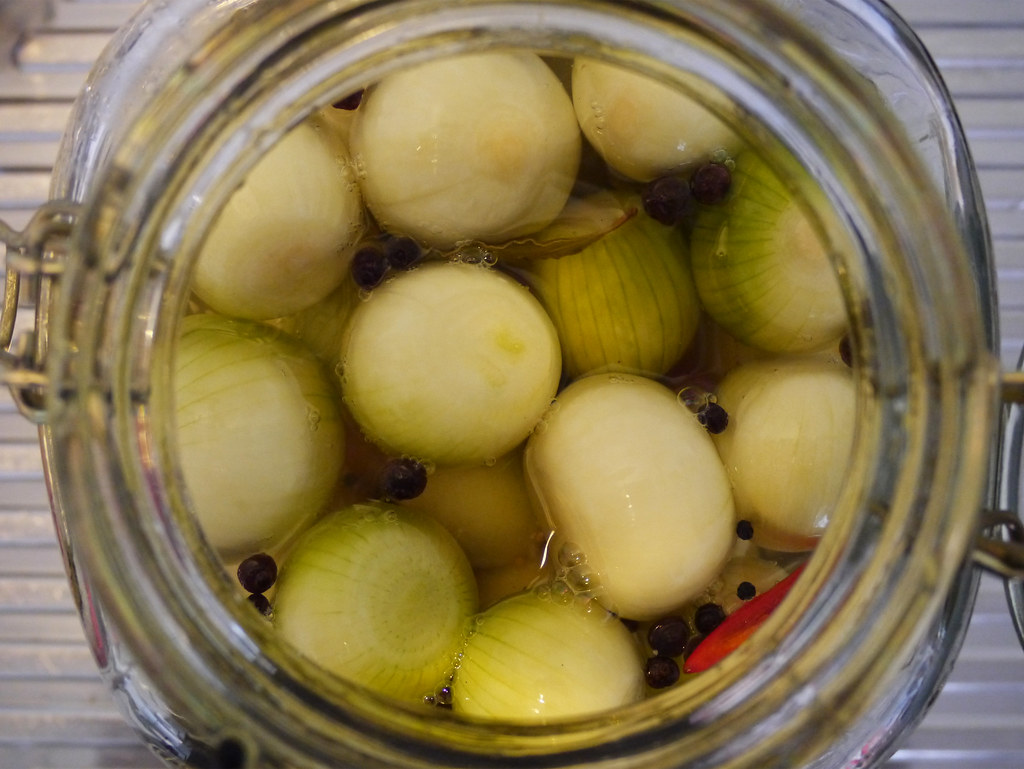
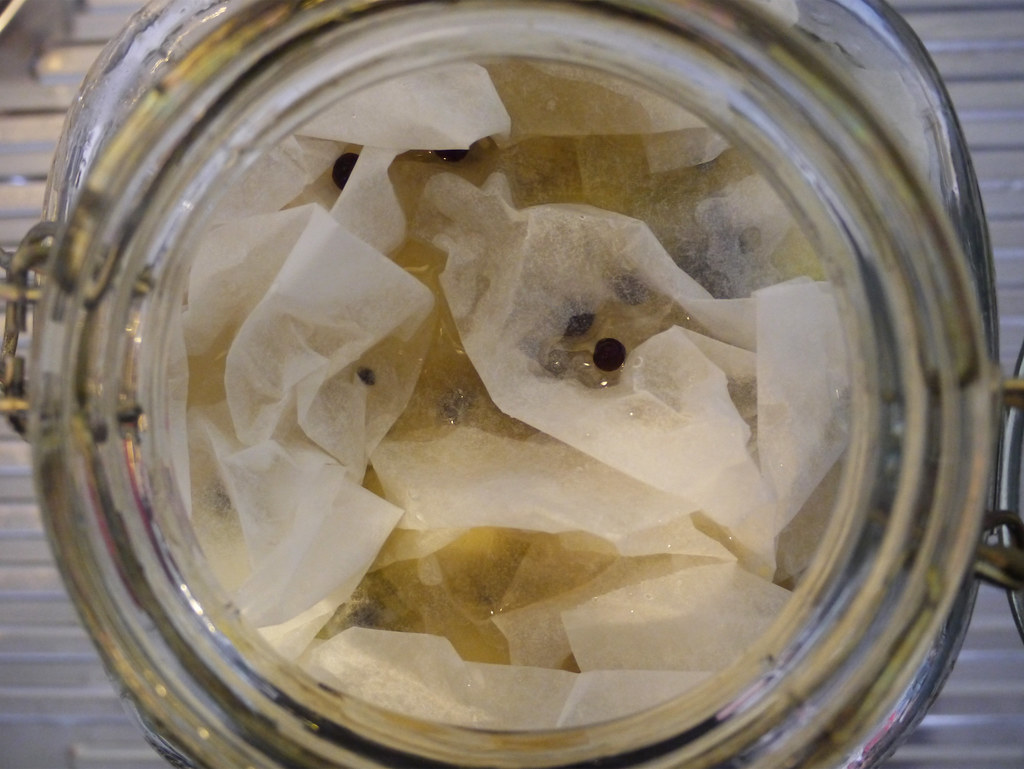
Make sure the onions are fully submerged under the brine by placing some scrunched up baking paper on top of the onions.
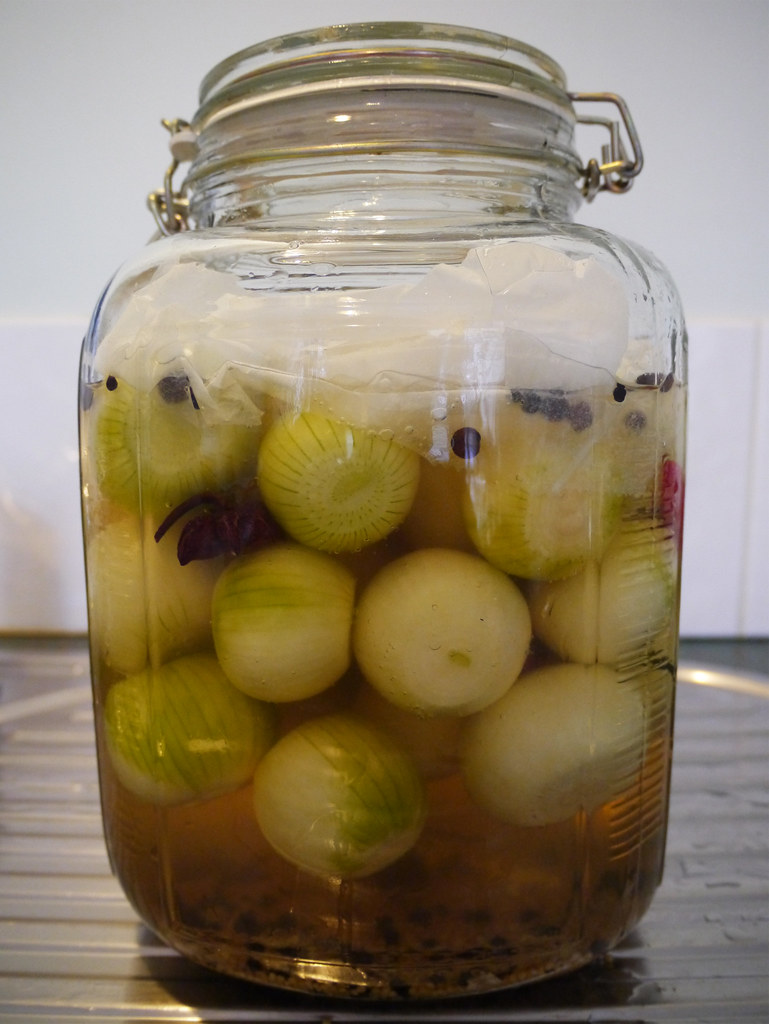
Replace the lid on the jar and tightly seal.
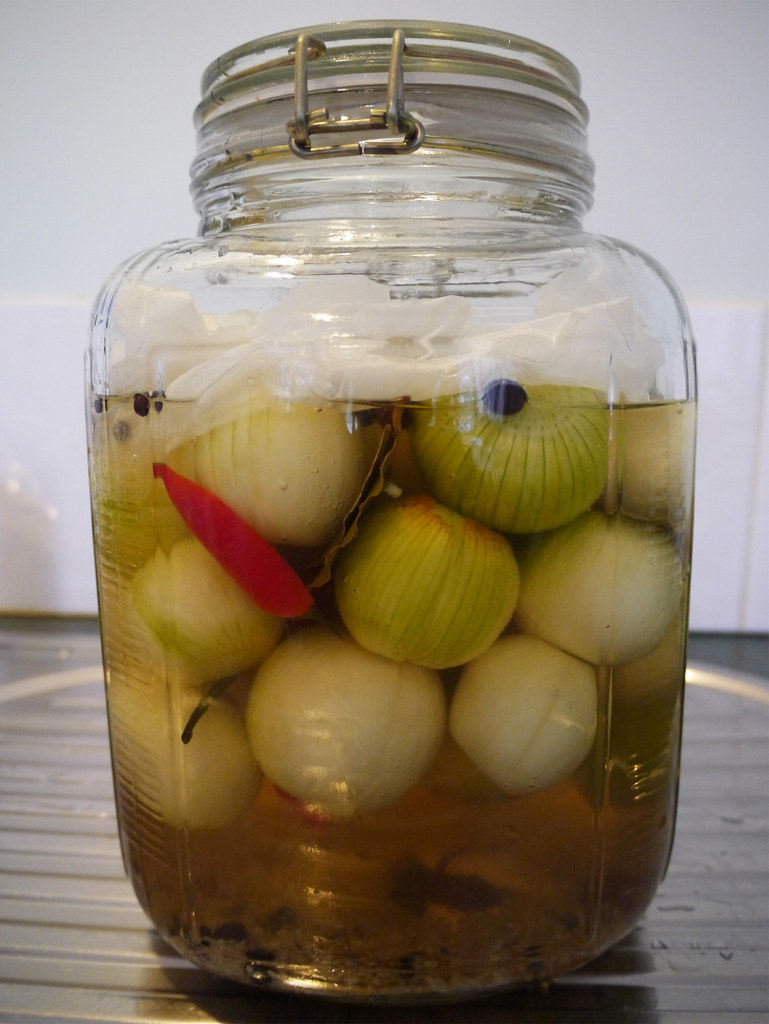
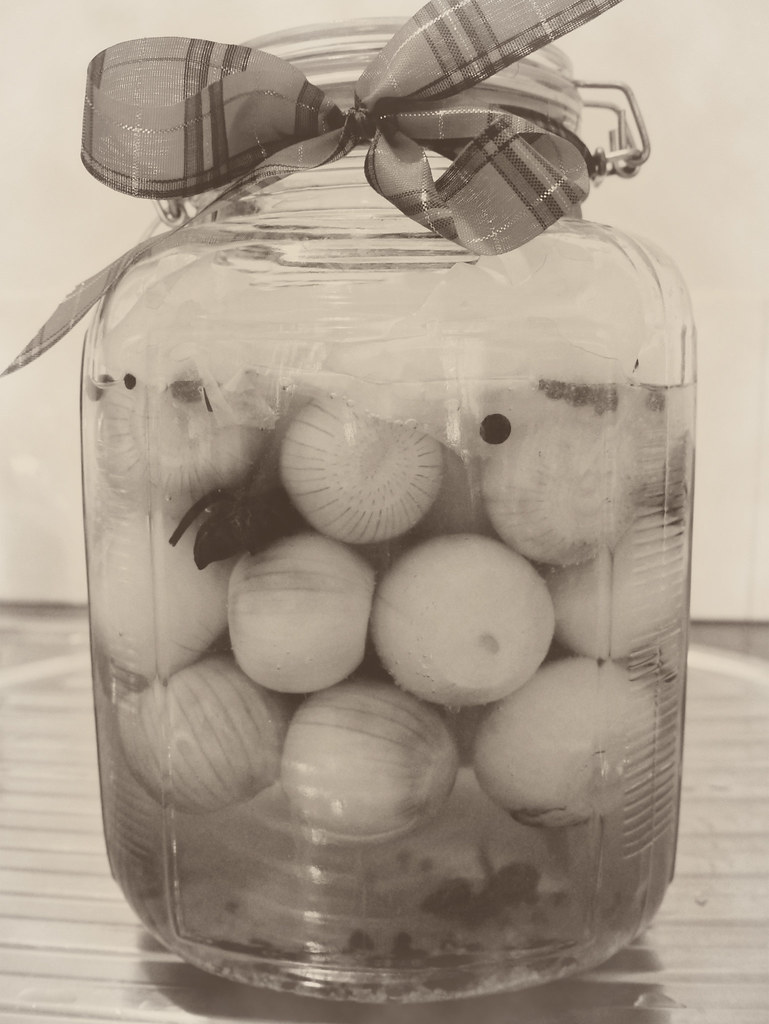
The Pioneer Woman ‘Heartland’ Action
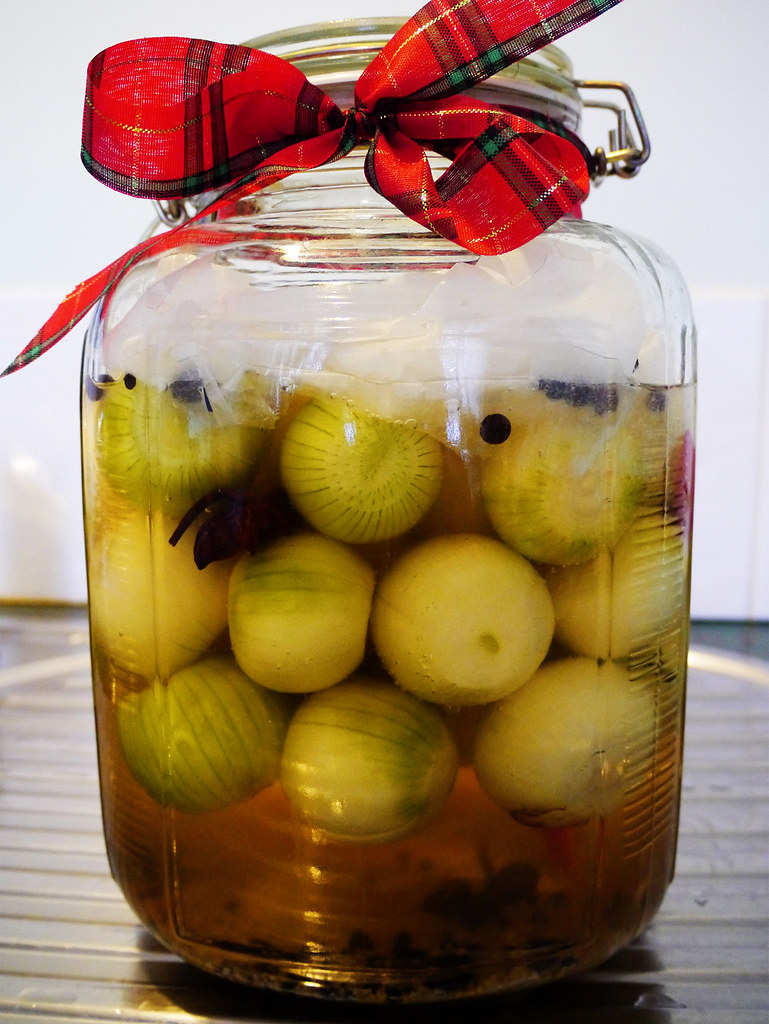
The Pioneer Woman ‘Fresh & Colorful’ Action
Keep safe in a kitchen cupboard and let culture at room temperature for 3 to 7 days. Let the jar burp daily as needed to release gas pressure. When the desired fermentation has been reached, move the jar to the fridge to slow and stall further fermentation while consumed. Bon appetit!smile
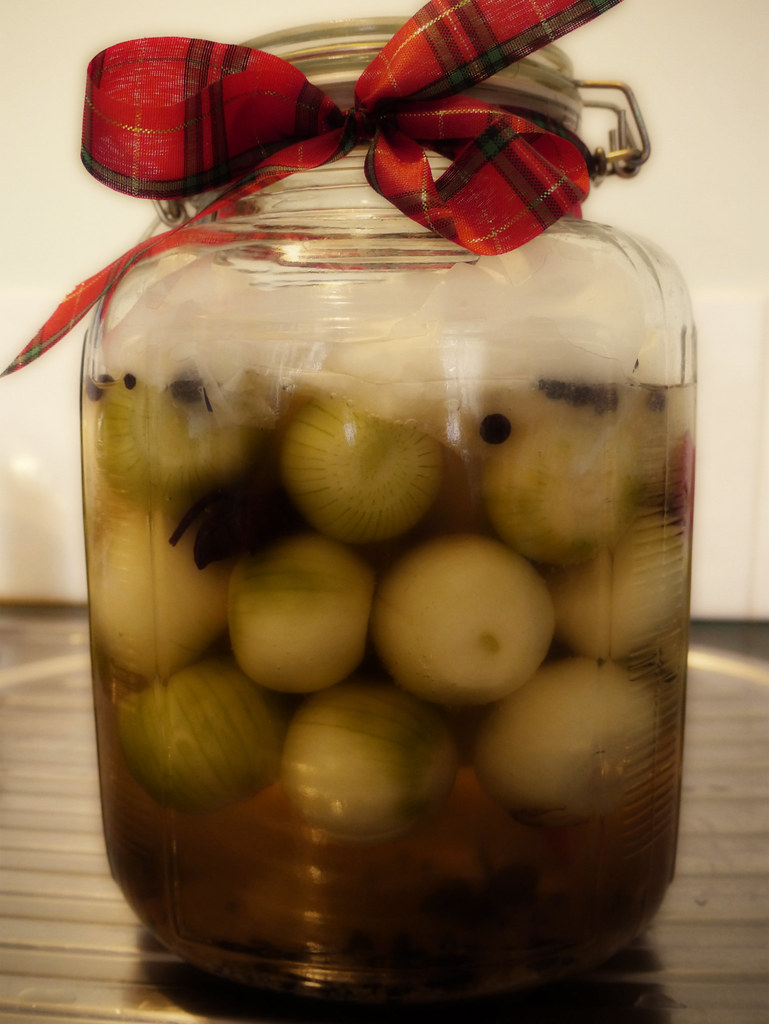
The Pioneer Woman ‘Old West’ Action

The Pioneer Woman ‘Seventies’ Action
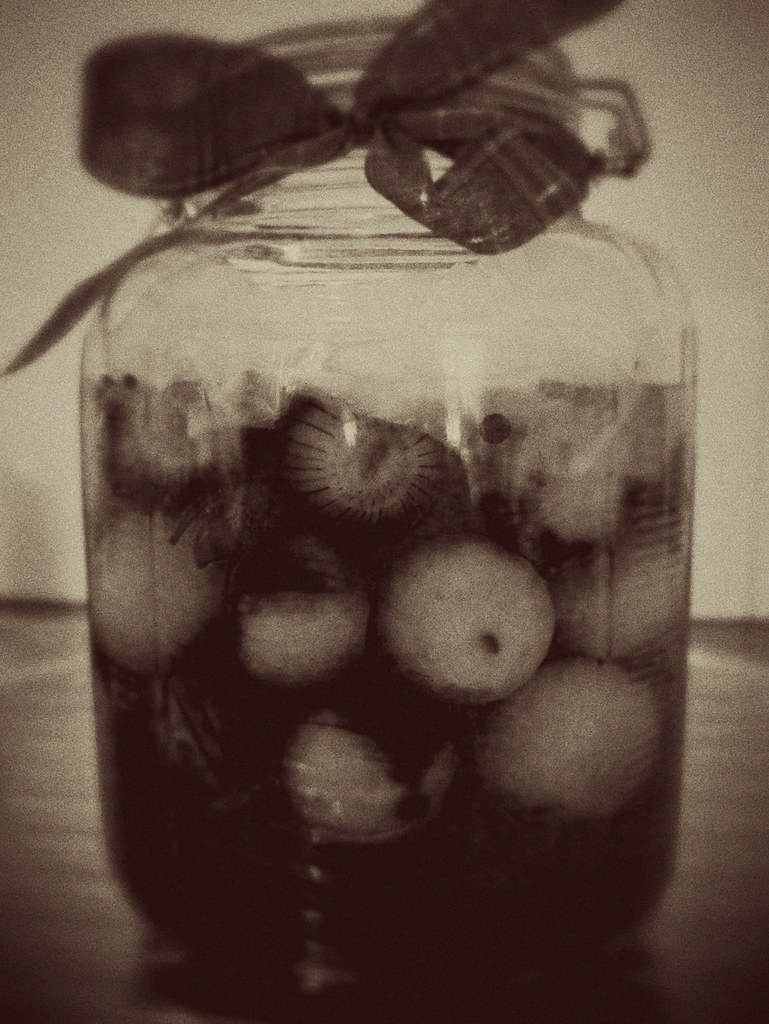
The Pioneer Woman ‘Vintage’ Action
- 1.5 kg of pickling onions
- 2 Tbsp of sea salt
- Pickling Solution:
- 2 Litres of water
- 5.5 Tbsp of sea salt
- 2 Tbsp of raw sugar
- 3 star anise
- 5 bay leaves
- 1 Tbsp of allspice
- 1 Tbsp of black peppercorn
- 1 Tbsp of yellow mustard seeds
- 2 fresh bullet chilies (halved)
- 2 cloves of garlic (minced)
- Top and tail the onions and then peel them.
- Place the onions in a large mixing bowl and sprinkle 2 Tbsp of sea salt over them. Mix through and let rest in the fridge for 3 hours.
- In a saucepan, add 2 Litres of water, 5.5 Tbsp of salt, raw sugar, star anise, bay leaves, allspice, black peppercorn, yellow mustard seeds, halved chilies and minced garlic.
- Bring the heat to medium and let the mixture simmer for a couple of minutes. Stir gently. When the salt and sugar are dissolved, turn off the heat and let the mixture cool down.
- After three hours, wash the onions in cold water, drain and let dry.
- In a sterilized glass jar, place half of the onions and half of the pickling spices from the mixture.
- Add the remaining onions.
- Carefully pour in the pickling solution and pickling spices from the saucepan.
- Make sure the onions are fully submerged under the brine by placing some scrunched up baking paper on top of the onions.
- Replace the lid on the jar and tightly seal.
- Keep safe in a kitchen cupboard and let culture at room temperature for 3 to 7 days. Let the jar burp daily as needed to release gas pressure.
- When the desired fermentation has been reached, move the jar to the fridge to slow and stall further fermentation while consumed. Bon appetit!smile
Update 05/09/14:
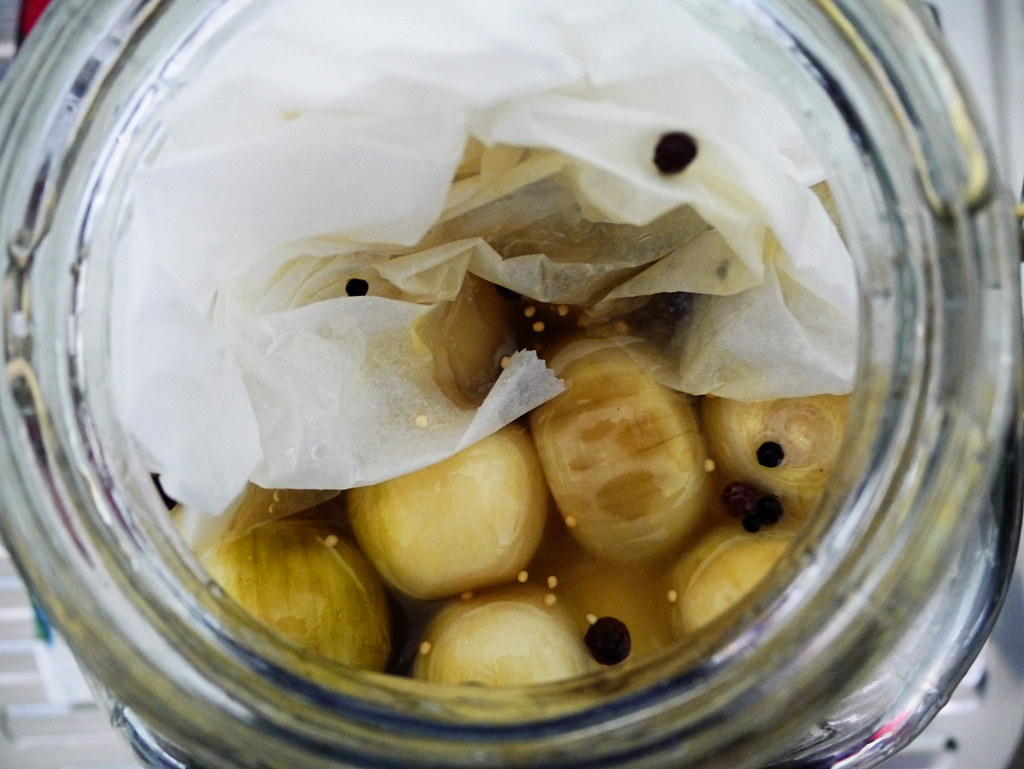
Lacto-fermented pickled onions #3 (14 days old)
Update 30/09/14:
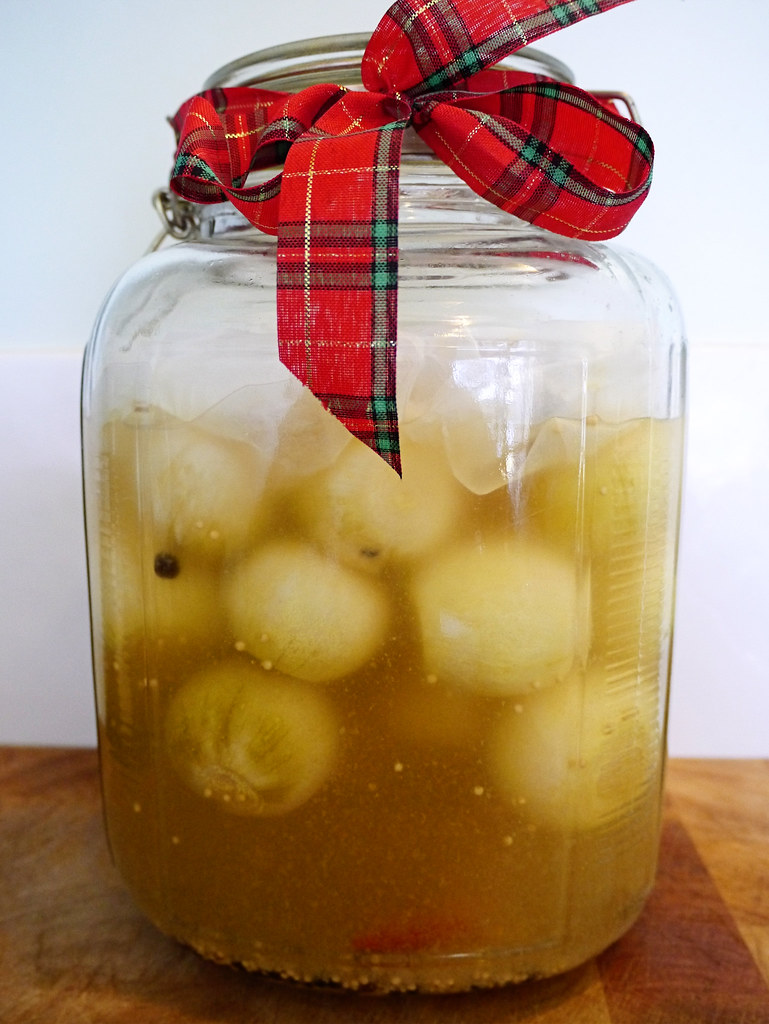
Date Taken: 30/09/14, 3:56 PM (39 days old)

Date Taken: 30/09/14, 4:05 PM (39 days old)
Ready to eat and delicious!!
[[1]]Reference: http://foodpreservation.about.com/od/Fermenting/a/Lacto-Fermentation-How-It-Works.htm.[[1]]
[[2]]Reference: http://foodpreservation.about.com/od/Fermenting/a/Lacto-Fermentation-How-It-Works.htm, http://www.culturesforhealth.com/what-lacto-fermentation/.[[2]]
[[3]]’Jeow mark plum’ is made from chili flakes/powder, fish sauce, padaek sauce, sugar, khao khua, and sliced shallots.[[3]]
[[4]]When I can find some sour plums, I’ll share the recipes for both the pickled sour plums and the jeow mark plum with you in detail.[[4]]
[[5]]Photos #21, #22, #23, #24, #25 used The Pioneer Woman’s Actions. You can find them for download here.[[5]]
I can’t wait to try these!
Hi Maureen,
Thanks for your comment. Yes, I like the look of these pickled onions and can’t wait to try them also. Will post update on how they turned out. I hope you’ll give them a try too. Have a great weekend! :)
Can just imagine how good these will taste by the time they’re ready!
Hi Helen,
Thanks for your comment. I know, I have a good feeling about these ones. Tangy, tasty and good for gut health. More plump than the KISS ones too. Will let you know how they turn out. Best wishes! :)
Your KISS post had me craving pickled onions and this one has just emphasized that! I want to grab a few off my screen to try :)
Hi Tandy,
Thanks for your comment. After my first jar of pickled onions (Grandma’s), I was hooked on homemade and simply had to make more and experiment with new recipes. I do like the idea of this traditional lacto-fermented recipe especially. Lol, if only you could, please jump right in! :)
Hi Padaek! (I’m back hehe). Yummo! Besides these recipes being delicious you are promoting gut health big time. It is so important for people to be eating more fermented foods!
Hi Jem!
Thanks for your comment. Hooray! Thanks for taking the time to visit and comment. I appreciate it. Yes, I’m so glad I dug a little deeper in my search and learnt more about lacto-fermented foods and it’s true about the importance and benefits of probiotics and good gut health. Still a lot to know but kombucha and traditional kimchi is next. Stay tuned and don’t be a stranger now. Best wishes! :)